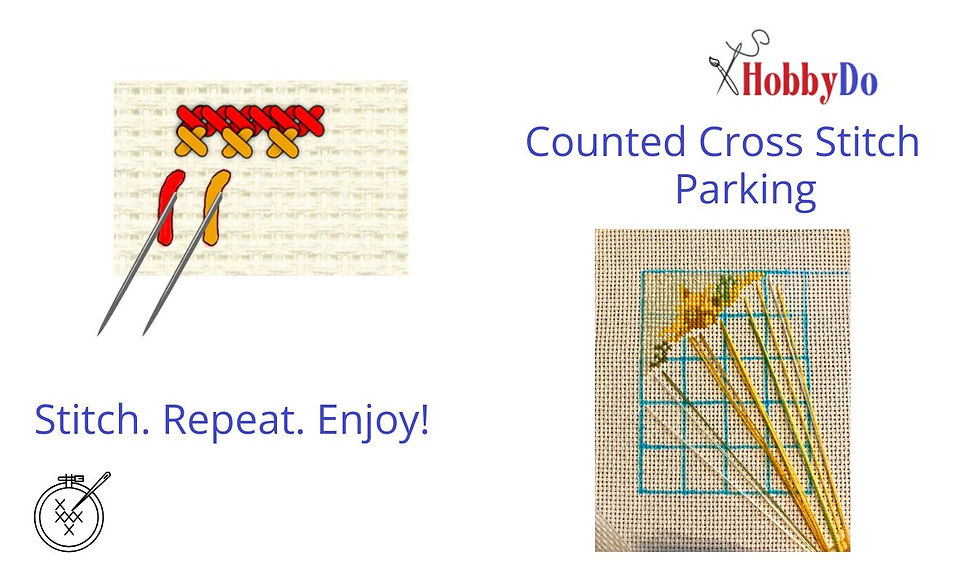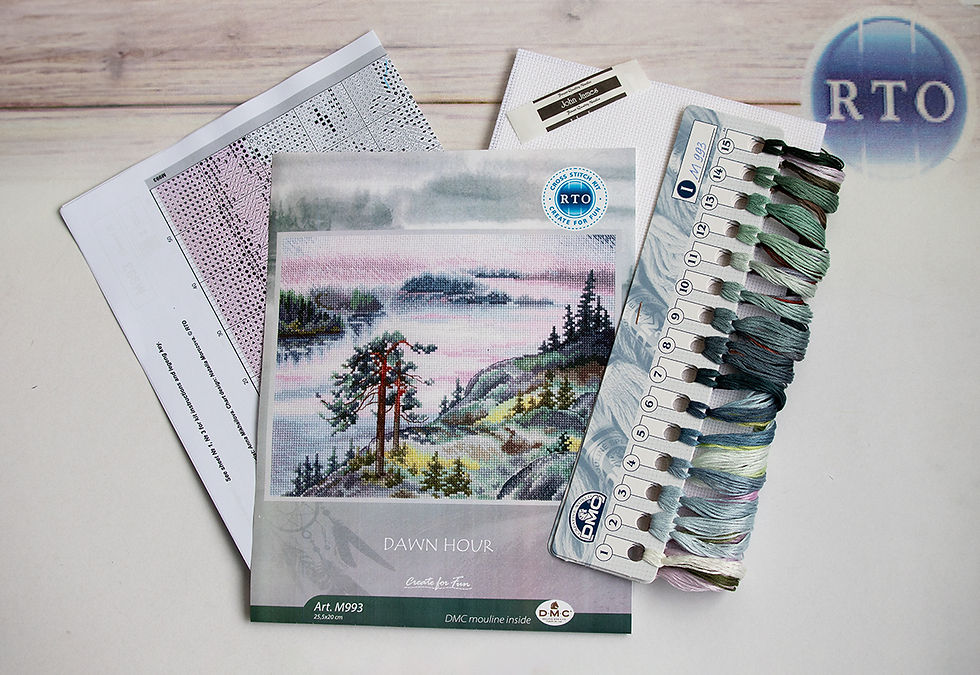Mastering Cross Stitch Techniques: Traditional, Danish, and Parking Methods
- Anna Laan
- Aug 7
- 4 min read
Cross-stitching is more than just a hobby, it’s a form of artistic expression, a relaxing escape, and a way to create beautiful pieces of needlework that last a lifetime. Whether you're a curious beginner or an experienced stitcher refining your craft, understanding different cross stitch techniques will greatly enhance your skills and enjoyment.
In this in-depth guide, we'll explore the three most popular cross-stitching methods: the Traditional Method, the Danish Method, and the Parking Method. You’ll learn how they differ, where each technique excels, and how to choose the one that fits your style and project.
What is Cross Stitching?
Cross stitch is a type of embroidery that involves forming small X-shaped stitches on fabric, typically using embroidery floss on evenweave fabrics like Aida or linen. These Xs create patterns and pictures, ranging from simple geometric designs to elaborate scenes.
While the basic motion is simple, the technique you choose determines your workflow, efficiency, and the final look of your piece.
Let’s explore the techniques in detail:
1. Traditional Cross Stitch Method
Also known as the English method technique, this is the classic way most people learn when starting out with cross-stitching. In this method, each cross is stitched individually before moving on to the next.

How It Works:
You complete one full X before moving to the next stitch.
Stitches are typically worked in rows, columns, or shapes, depending on the pattern.
After inserting the needle from the back to the front at one corner, you complete the diagonal stitch, then come back across in the opposite diagonal to finish the X.
Pros:
Accuracy: Great control over color placement and stitch quality.
Neatness: Results in a clean, tidy back side with minimal thread show-through.
Beginner-Friendly: A great technique for those new to the craft.
Cons:
Time-Consuming: Stitching each cross one at a time can slow progress.
Not Ideal for Color Blending: Switching colors frequently can become tedious.
Requires Fabric Tension: Typically done with hoops or frames to maintain even tension.
Best For:
Small projects with many color changes.
Stitchers who value control and precision.
2. Danish Cross Stitch Method
The Danish method, or the forward needle technique, is a streamlined way of stitching that increases speed and rhythm. You stitch a line of half crosses (////), then return to complete the Xs (\), usually in a row.

How It Works:
Work a line of diagonal stitches in one direction (e.g., left to right).
Return along the same path to complete the crosses.
Can be done vertically or horizontally, depending on the design.
Pros:
Faster Stitching: Less needle movement makes this method efficient.
Good for Solid Areas: Great for stitching large blocks of the same color.
Fluid Motion: Encourages a consistent stitching rhythm.
Cons:
Detail Can Suffer: Not ideal for designs with frequent color changes or small elements.
Thread Management: Color transitions can be trickier to keep tidy.
Requires Fabric Tension: Like the traditional method, it benefits from the use of a hoop or frame.
Best For:
Large patterns with single-color areas.
Stitchers looking to speed up their workflow.
3. Parking Method
The parking method is a more advanced stitching technique that’s especially popular for full-coverage projects or pieces with many color changes. It allows you to work in “blocks” or “grids” of stitches without finishing a thread before moving to the next area.

How It Works:
Divide your pattern into 10x10 stitch blocks.
Stitch all of one color in the block.
Instead of cutting or finishing the thread, "park" it at the starting point of its next use.
Work with multiple needles or threads concurrently, parking each as needed.
Pros:
Efficient: Reduces thread waste and unnecessary needle threading.
Less Counting Errors: Working block-by-block makes it easier to follow complex patterns.
Great for Full-Coverage: Ideal for large, intricate designs with heavy color use.
Cons:
Learning Curve: Can be confusing for beginners to keep track of multiple threads.
Messy Back: The reverse side may look more cluttered.
Requires Organization: Needs thread labels, symbols, and sometimes software or highlighter tools.
Best For:
Experienced stitchers.
Full-coverage or high-detail projects.
How to Choose the Right Cross-Stitch Techniques
Choosing your technique depends on the pattern, your comfort level, and your personal stitching style. Ask yourself:
Does your pattern have many color changes or is it mostly solid blocks?
Are you stitching a small design or a full-coverage masterpiece?
Do you prefer accuracy or speed?
Are you willing to use tools like hoops, stands, or thread organizers?
There’s no wrong answer—what matters most is finding a method that feels natural and brings you joy.
Tools That Make a Difference
No matter which technique you choose, having the right tools makes a world of difference:
Embroidery Hoops or Frames: Essential for keeping your fabric taut and preventing puckering.
Needles: Blunt-tipped tapestry needles prevent damage to fabric.
High-Quality Floss: Choose trusted brands like DMC or Anchor for colorfast and durable threads.
Aida or Evenweave Fabric: Choose the right count based on your project detail.
Thread Organizers & Parking Grids: Must-haves if you opt for the parking method.
Scissors: A sharp pair of embroidery scissors keeps threads clean and tidy.
Stitch Smarter with a Cross Stitch Kit
If you're just starting out—or if you want the convenience of everything in one place—a cross stitch kit is a fantastic choice.
At HobbyDo, we carry an extensive collection of RTO counted cross stitch kits for every skill level. Each kit includes:
Pre-sorted embroidery floss DMC mouline 117
Charted pattern or printed design
Aida or evenweave fabric
Embroidery needles
These curated kits are perfect for learning new techniques while creating beautiful projects with ease and confidence.

Final Thoughts: Stitching is Personal
Cross-stitching is both a skill and a meditative practice that rewards patience and creativity. Whether you fall in love with the traditional method’s precision, the Danish method’s flow, or the parking method’s structure, there’s a perfect match for every stitcher.
Experiment with different styles, work on varied projects, and find the rhythm that feels right for you.
Most importantly, enjoy the journey.
Happy stitching from all of us at HobbyDo! 🧵
📌 Explore our full range of RTO counted cross stitch kits now










Comments